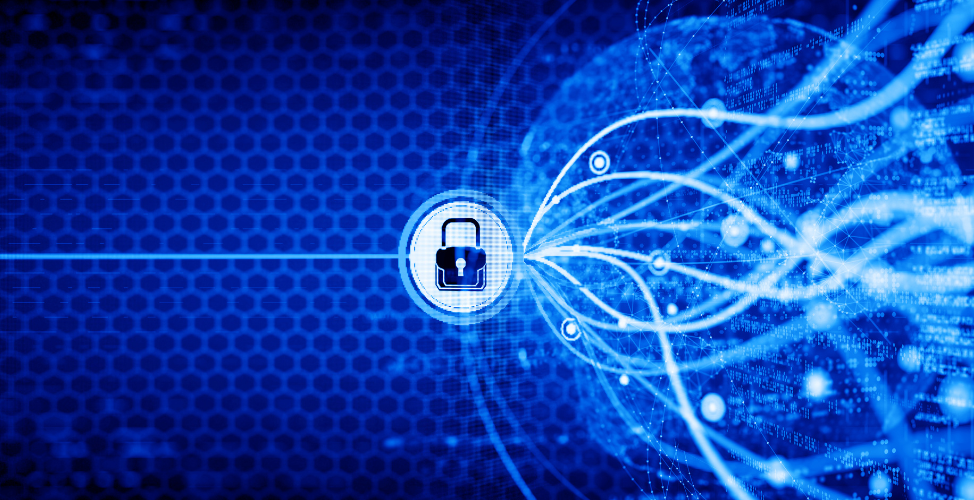Will AI Replace Cyber Security? What Businesses Need to Know
Picture a busy morning at the office. You catch chatter about an ‘impenetrable’ new AI tool that can anticipate threats before they happen. You overhear a coworker wonder if automation will make actual security analysts obsolete. This question “Will AI replace cyber security?” keeps popping up everywhere. People worry that intelligent machines might one day do the entire job.

Yet humans still catch problems no script can. Machines can analyze heaps of data at lightning speed, but do they ‘sense’ warning signs or user habits beyond the code? Let’s explore the reality of AI’s place in defending our networks, from present-day breakthroughs to tomorrow’s job prospects.
Understanding AI in Cybersecurity
What Is AI in Cyber Security?
Imagine sifting through endless network logs while searching for a single suspicious activity. Human eyes would wear out in no time. AI can do that job in seconds, thanks to machine learning models that spot unusual patterns or subtle anomalies. So ‘AI in cyber security’ is a general term for using intelligent tools to analyze and protect systems.
AI helps with:
- Identifying suspicious behavior, like repeated access attempts at odd hours
- Automating real-time responses, such as isolating compromised files
- Sorting legitimate alerts from junk (cutting the noise that often overwhelms security teams)
Essentially, AI supercharges standard security measures by adding rapid, data-driven insights. Yet it does not stand alone. Analysts and system admins still do the final checks.
Current Trends and Role of AI in Cyber Defense
The number of cyber attacks globally rises every year, pushing businesses to ‘automate or drown.’ A 2025 study by CompTIA reports that 77% of businesses and IT professionals are already using AI in cybersecurity. This isn’t surprising. Attackers have also begun leveraging AI for more sophisticated attacks, like writing tricky phishing emails or building sneaky malware.
On the bright side, many companies keep forging new AI solutions. Tools can now generate real-time threat intelligence, predict likely infiltration methods, and run continuous vulnerability checks. Firewalls and SIEM (Security Information and Event Management) systems incorporate AI modules to reduce false positives. Automated triage also frees humans from repetitive chores so they can focus on deeper tasks.
Benefits and Limitations of AI Integration
AI does well with:
- Fast analysis of huge traffic data
- Pattern recognition to detect slight oddities
- Instant reaction to basic threats
At the same time, it has flaws:
- AI can’t grasp the emotional or social factors criminals sometimes exploit
- Adversaries can train malicious AI to bypass standard defenses
- Rare or novel threats might slip under AI’s radar if not updated often
- Costs can add up, from specialized hardware to skilled AI staff
No matter how advanced your system is, the best results combine AI’s speed with human judgment. You can’t rely on automation alone.
Watch more: The role of Generative AI Cybersecurity in Preventing Cyber Threats
Impact of AI on Cybersecurity Jobs
Will AI Replace Cyber Security Professionals?
Short answer: No. Humans remain the key.
- AI struggles with brand-new or ‘zero-day’ attacks because it learns from known patterns
- Security pros adapt to new social engineering tactics or changes in attacker motives
- Teams weigh business context, legal compliance, and broader strategy in ways AI can’t replicate
An everyday example is an advanced persistent threat (APT) that hides inside typical network flows. AI might see the suspicious code but can’t always interpret real intent. A savvy analyst steps in, investigating the attacker’s method and reason. AI is a sidekick, not the main hero.
New Opportunities and Skill Shifts in Cybersecurity
Jobs won’t vanish. They may evolve. AI is great at data crunching, so human roles center on creative thinking, critical analysis, and problem-solving. Here’s how that looks:
- Threat Hunter: Finds advanced attacks that bypass automation
- Security Strategist: Designs policies, bridging tech and business
- AI Security Engineer: Builds and tunes AI-based detection or forensics
- Incident Responder: Orchestrates major breach containment, deciding on multi-layer steps
These roles emphasize deeper knowledge, ‘soft skills,’ and cross-domain insights. According to a 2024 survey by O’Reilly, approximately 34% of technology professionals reported a shortage of AI security skills within their organizations. This highlights a significant demand for expertise in AI-based tools, ethics, communication, and domain knowledge.
Instead of removing security jobs, AI shifts them. Tech folks add more AI know-how, while novices might step into new job roles that didn’t exist before. Some call it ‘upskilling’ and ‘reskilling.’ AI also creates more job demand in specialized fields, like for analysts who understand both coding and crisis management.
How Businesses Should Prepare for an AI-Driven Cybersecurity Landscape
Embracing AI as a Cyber Defense Tool
Ignoring AI is risky? Bad move. Hackers sure aren’t waiting around. The faster you get on board, the more you’ll win. For businesses, adopting AI can bring vital benefits:
- Swift detection of unusual data patterns
- Automated blocking of questionable IP addresses
- Real-time analysis to protect sensitive data
Before choosing a product, it’s wise to:
- Evaluate your existing systems, from staff availability to network complexity
- Check if you can integrate new AI tools with older architecture
- Start with smaller pilot projects (like spam filter upgrades) to measure real-world gains
Strategies for Safe AI Integration and Workforce Upskilling
It’s easy to rush into AI projects, but planning ensures success. Key steps:
- Assess Gaps: Identify where your biggest issues are. Maybe you get swamped by false positives or can’t handle large network logs. That’s your AI pilot area.
- Choose Tools Wisely: Evaluate solutions from established providers. Compare how they handle updates, false alarms, or newly discovered threats.
- Train Your Team: Invest in courses for employees. They need to interpret AI findings and manage daily tasks. ‘AI-literate’ staff leads to fewer errors, simpler adoption, and better synergy with advanced tools.
- Adopt Layered Security: One system is not enough. Combine AI threat detection with standard security layers. Keep manual oversight for critical steps.
When implementing cloud computing AI, it’s essential to double-check compliance requirements and data privacy laws that may impact how AI tools are used. Since many AI systems store logs and process information in the cloud, businesses handling personal or financial data must ensure data sovereignty and regulatory alignment. Verifying where data is stored and how it’s protected is a critical step in using AI responsibly and securely in cloud environments.
How SmartOSC Can Enhance Your Cyber Security Strategy with AI
SmartOSC has a strong background helping companies modernize their technology approach. Our cybersecurity solutions combine proven risk assessment with advanced AI-driven threat detection. We understand your business environment, tailoring strategies that balance efficiency and safety.
When you partner with SmartOSC:
- You get a thorough review of your existing systems
- We implement real-time dashboards for advanced analytics
- You keep flexible control over expansions or updates
- Our team shows you how to train staff on AI usage, turning employees into AI-savvy professionals
We focus on bridging AI with your current processes so you can adapt quickly. Our solutions are also designed to align with your budget. Whether you’re a medium-sized enterprise or a large conglomerate, we offer a scalable game plan. From cloud hosting to advanced application development, SmartOSC can drive your transformation from multiple angles.
Conclusion
Will AI replace cyber security? The answer is no. AI transforms how businesses approach defense tasks and speeds up threat detection. But the essence of security, human insight, still reigns. Attackers adapt. So do we. AI can handle a mountain of logs, but it can’t replicate the intuitive judgment of trained professionals.
In the end, you need both. Machines serve as the quick watchers, scanning logs and neutralizing basic intrusions. Humans interpret results, decide on bigger steps, and build strategies that adapt. AI rewrites some job roles, yet it also creates new ones. If you prepare thoughtfully, you can harness AI’s power while keeping your best talent at the center.
Curious about how AI can fit into your security operations? Let’s talk. Contact us at SmartOSC for a tailored plan that protects your business today and positions you for tomorrow. You’ll discover that AI isn’t here to replace you; it’s here to make you stronger.


